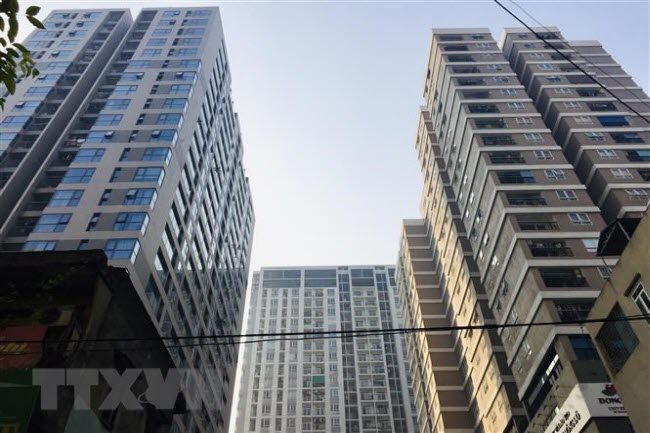 |
|
File photo of residential blocks. The central bank in Vietnam has issued a road map to tighten control over property loans
|
SBV has released Circular 22/2019 regulating safety proportions in banking activities at local commercial banks and foreign bank branches, including a road map for the 2020-2022 period.
Between January 1, 2020, and September 30, 2020, commercial banks can use short-term funds to finance mid- and long-term loans at a maximum ratio of 40%. The ratio will then be reduced to 37% from October 1, 2020, until September 30, 2021.
The cap of 34% will be applied to the period between October 1, 2021, and September 30, 2022. From October 1, 2022, onward, it will be fixed at 30%.
Aside from reducing the ratio of short-term funds used to offer mid- and long-term loans, the central bank also raised the risk ratio of loans for the real estate sector from 150% to 200%.
The risk weight of 50% will be applicable to property loans whose collateral are houses (including ones being built in the future), land use rights certificates and the land-attached assets of the borrower.
For home loans worth VND4 billion or more, the risk weight asset ratio will be 120%, taking effect from January 1, 2020, to December 31, 2020, and the figure will be raised to 150%, starting January 1, 2021. SGT

Real estate loans make up 1/5 of total outstanding loans in Vietnam
The 14.58% growth rate is higher than the average credit growth of the economy.

VN banks requested to control loans with savings books as collateral
The State Bank of Vietnam (SBV) has asked local commercial banks to tighten control of loans that use savings books as collateral to ensure the safety of the banking system.
 The State Bank of Vietnam (SBV) has issued a three-year road map, starting from 2020, to restrict commercial banks from using short-term capital to offer mid- and long-term loans to homebuyers.
The State Bank of Vietnam (SBV) has issued a three-year road map, starting from 2020, to restrict commercial banks from using short-term capital to offer mid- and long-term loans to homebuyers.